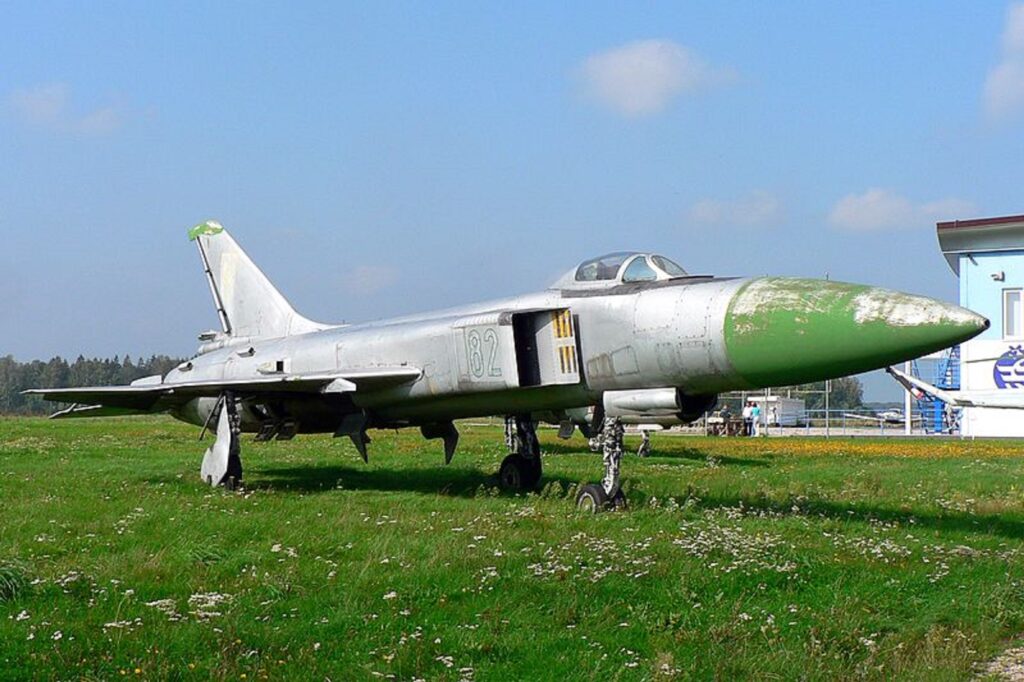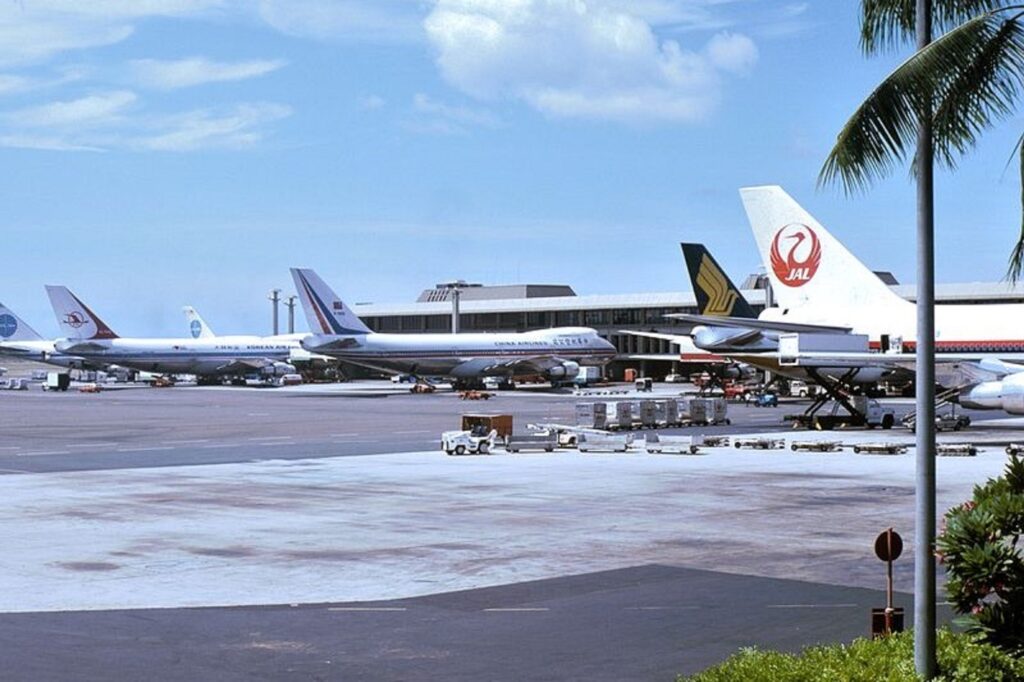On August 31, 1983, Korean Air Lines (today known as Korean Air) Flight 007 left John F. Kennedy Airport (JFK) in New York, United States (US) bound for the East Asian capital city of Seoul.
After refueling in Anchorage, Alaska, the Boeing 747 aircraft, carrying 269 people, passed the International Date Line, jumping forward to the fateful day of September 1, 1983.
While the passengers on board slept and passed the time playing games or reading, unbeknownst to them, the USSR military were watching and becoming increasingly agitated by the plane’s presence.
While Cold War tensions between the West and the Soviet Union may have receded slightly from the dangers of the Cuban Missile Crisis in 1962, the rivalry that had dominated the globe since the end of the Second World War was still very much alive.
So much so that when Flight 007 strayed into Soviet airspace, the decision was made by the USSR military commanders to destroy the aircraft.
At 3:36 am near Sakhalin Island, USSR, a Sukhoi Su-15 fighter jet, launched an attack against the passenger jet which brought the Boeing 747 crashing down into the Sea of Japan.
All those on board perished but the story did not stop there, and what followed was the largest escalation in Cold War tensions for 20 years.
Searching for answers

Following the crash, the US, Japan, and South Korea were determined to understand what had happened, but this was a time of geo-political deception and finding the answers would pose many difficulties in the following years.
Flight 007 left JFK for Gimpo International Airport (GMP) at 11:50 pm local time on August 31, 1983.
In 1983 it was not uncommon for long-haul flights to stop off to refuel, so when the Boeing 747 landed in Alaska several hours later it was a scheduled part of the flight.
At 4:00 am local time, the aircraft, registered HL7442, took off for the second part of its journey.
Around three hours into its flight the Boeing 747 appeared on Soviet radars. The pilots were completely unaware that the aircraft had drifted off its course and how much danger they were now in.
Around the same time, a US Boeing RC-135 reconnaissance aircraft was also reportedly in the area, creating confusion among Soviet military officials.
Soviet fighter jets were quickly scrambled but due to a problem with the radar system on the Kamchatka Peninsula the pilots could not locate the Boeing 747 and failed to make visual identification.
The South Korean aircraft then cleared Kamchatka and was once again flying in internationally recognized airspace.
The USSR was now utterly convinced that the aircraft was a spy plane and when Flight 007 re-entered its airspace Su-15 fighter jets were deployed.
The passenger plane was now in perilous danger and more than 200 miles off its course.
In an interview with CNN in 1998, Soviet pilot Col. Gennadi Osipovitch, told the news station that when he saw the passenger jet, he “wondered” if it was a civilian aircraft.
“Military cargo planes don’t have such windows,” he said in the interview.
“I had a job to do. I started to signal to (the pilot) in international code. I informed him that he had violated our airspace. He did not respond,” Osipovitch claimed.
According to Osipovitch, he also fired warning shots, but the Korean Air Lines pilots did not see them.
At the same time Flight 007 was in communication with Tokyo air traffic control and had received permission to increase its altitude, unfortunately this maneuver appeared to only confirm the Soviet’s suspicions that this was not a passenger jet.
According to reports, Osipovitch fired two air-to-air missiles near Sakhalin Island and declared that the aircraft had been destroyed.
“My orders were to destroy the intruder. I fulfilled my mission,” Osipovitch told CNN.
In an interview in 1996 with the New York Times, Osipovitch admitted that he recognized the plane was a civilian aircraft.
“I saw two rows of windows and knew that this was a Boeing. I knew this was a civilian plane. But for me, this meant nothing. It is easy to turn a civilian type of plane into one for military use,” he said.
The United Nations’ (UN) International Civil Aviation Organization (ICAO) would later conclude that the Soviet pilots failed to carry out “ICAO standards and recommended practices related to the interception of civil aircraft”.
It is understood that no attempts were made to contact the Korean Air Lines Flight by radio.
The fallout
Following the crash, the world became a significantly more dangerous place. The American President at the time, Ronald Reagan, described the incident as a “crime against humanity” and “an act of barbarism”.
While the USSR leader, Yuri Andropov, decreed the disaster as a “provocation” that was “masterminded” by the US.
The USSR initially denied being responsible for the incident but when intercepted Soviet communications were presented the government backtracked and said the Boeing 747 was a spy plane.
Relationships between the West and the USSR deteriorated further during the search for the downed Korean Air Lines plane.
The Soviets refused to let any foreign countries assist with the search within the USSR’s territory and the US and South Korea were left to search only international waters.
No aircraft or black box was found, and any human remains discovered were generally washed up on shore. Most families were left with nothing of their loved ones to bury.
Collapse of the Soviet Union
In the months following the crash, the ICAO released an interim investigation report indicating that Flight 007 veered off course by accident.
The ICAO said there were two probable explanations. One that after leaving Alaska the auto flight had been set to “heading” mode rather than the more capable Inertial Navigation System and another possibility considered was that the incorrect information had been entered into the navigation system.
Commenting In the ICAO report the Soviet Union said, “no remains of the victims, the instruments or their components or the flight recorders have so far been discovered”.
The ICAO also declared that there was no evidence to support the Soviet claims that the passenger jet was a spy plane.
When the USSR collapsed in 1991, many families of Flight 007 victims hoped that this would lead to more disclosures regarding the crash from the new Russian government and they were not disappointed.
Under the leadership of President Boris Yeltsin, documents and memos relating to the crash were made public, finally allowing relatives of the victims some peace.
One memo revealed that the Soviet Union had found the Boeing 747’s flight recorder in October 1983, despite claiming it was never discovered.
The memo revealed that the flight recorder had been brought aboard a vessel and flown to Moscow for decoding following the crash. Divers were also interviewed, who said they had seen the downed aircraft underwater.
CNN also reported that the cockpit voice recorder was played to some of the victims’ relatives during a meeting in Moscow in 1992.
By listening to the recordings, Hans Ephraimson-Abt, whose daughter Alice died on the flight, discovered that the plane was not immediately destroyed in the air and continued to fly for 12 minutes before crashing in the sea.
Citing a Boeing report given to the ICAO, Ephraimson-Abt, said missile fragments had “hit the back of the plane, destroying three of its four hydraulic systems, severing some cables” and puncturing the aircraft walls.
“(The plane) crashed into the sea, with most passengers smashed into pieces or drowning,” Ephraimson-Apt said.
In 1992, President Yeltsin released the flight data recorder and cockpit voice recorder of Flight 007 to South Korea.
In 1992, following the release of previously undisclosed material, the ICAO resumed its investigation and concluded that the most likely explanation of why the aircraft veered into Soviet airspace was the “heading” autopilot mode.
Where are the victims’ bodies?
The Flight 007 crash has spawned many conspiracy theories. One even suggested that the passengers were never killed but instead imprisoned by the Soviet Union.
These types of theories have risen mainly because questions around the location of the victims’ bodies have never been fully answered.
In 1991 US Senator Jesse Helms, who happened to be on a parallel flight from Anchorage to Seoul around the same time as Flight 007, wrote a letter to President Yeltsin asking several questions relating to the crash and the victims’ bodies.
Following the communication Yeltsin was reported to have said that documents found between the KGB and Central Committee of the Communist Party indicated there had been a tragedy and that documents existed that could explain the “entire picture”.
However, President Yeltsin, said the memo added that, “these documents are so well concealed that it is doubtful that our children will be able to find them”.

